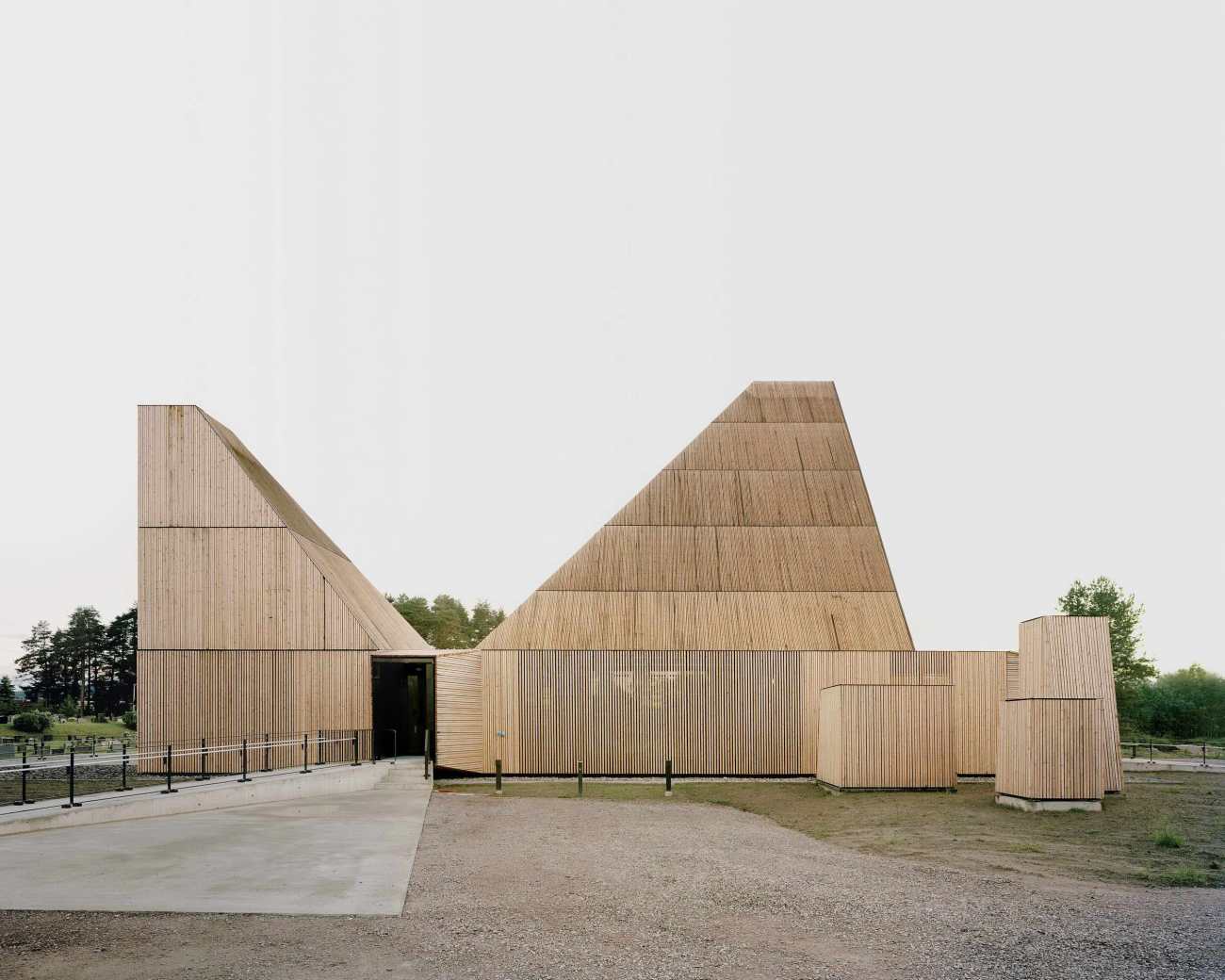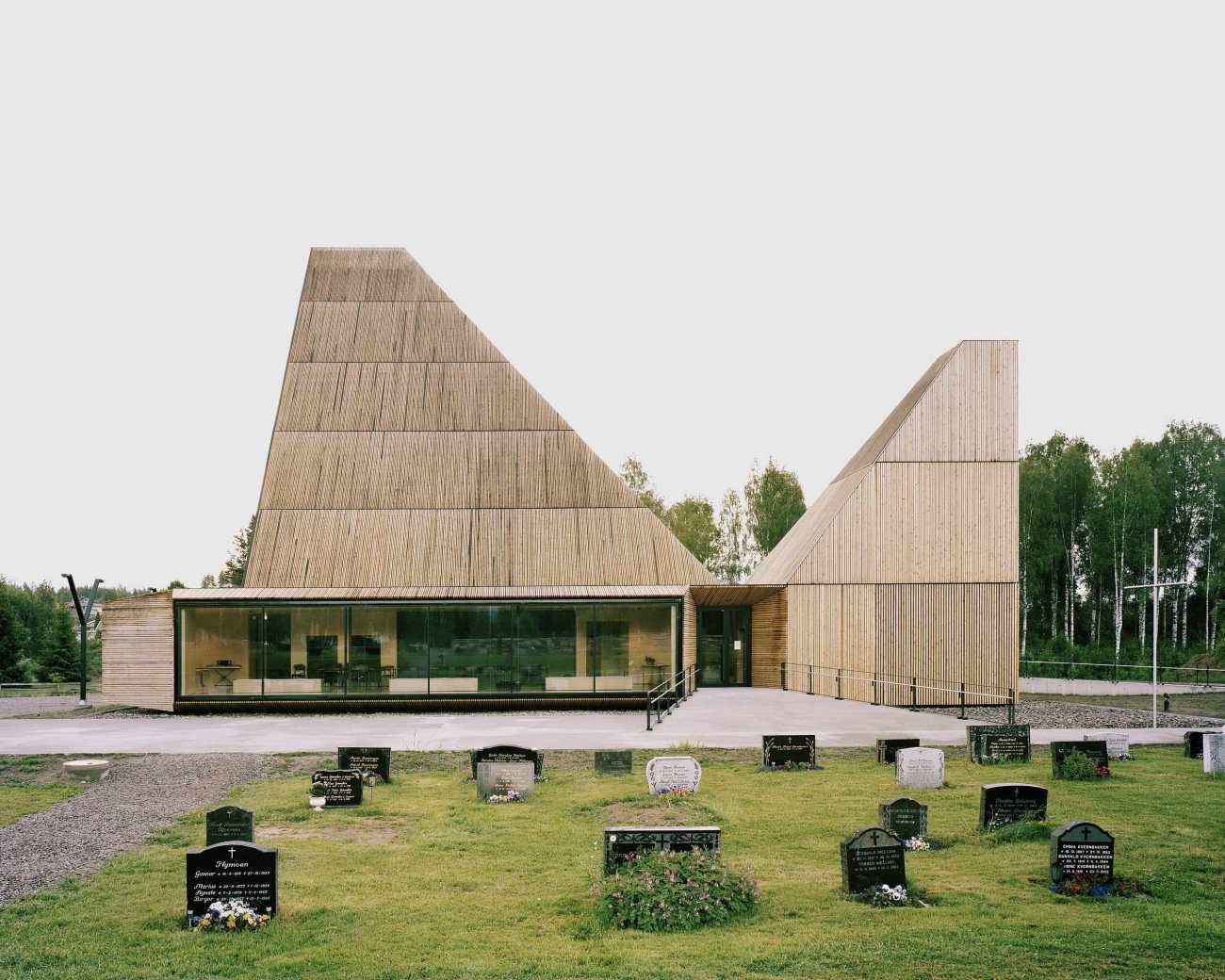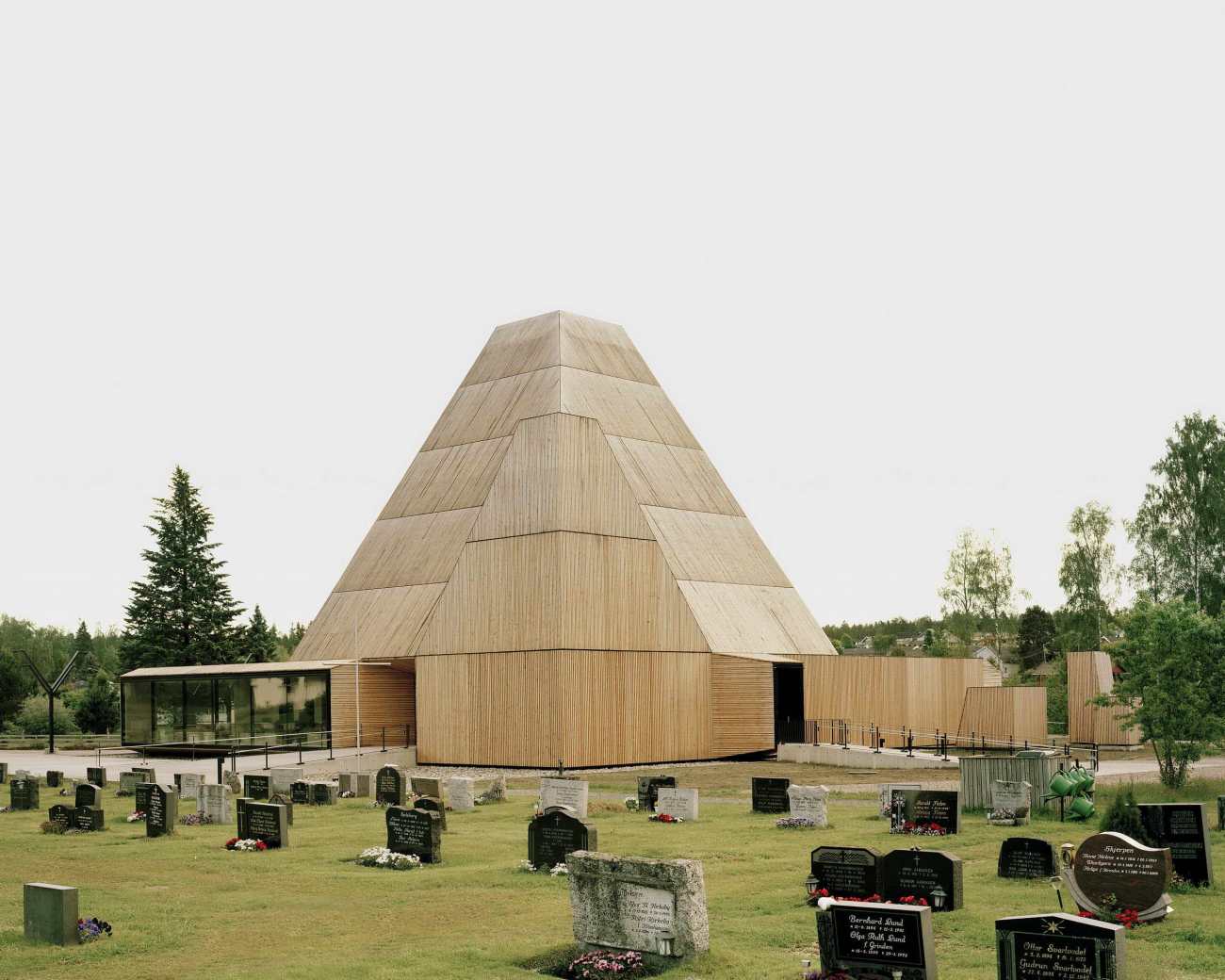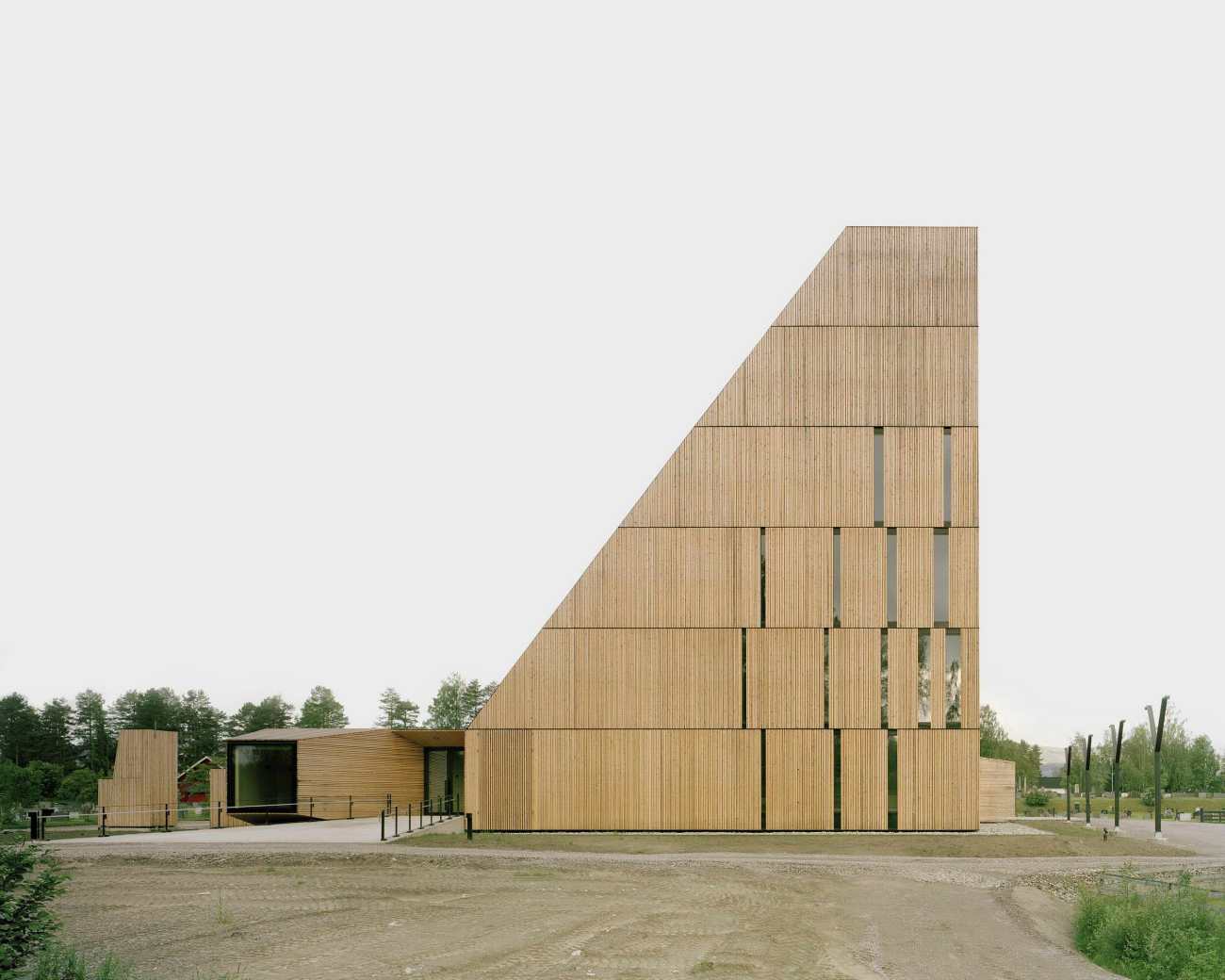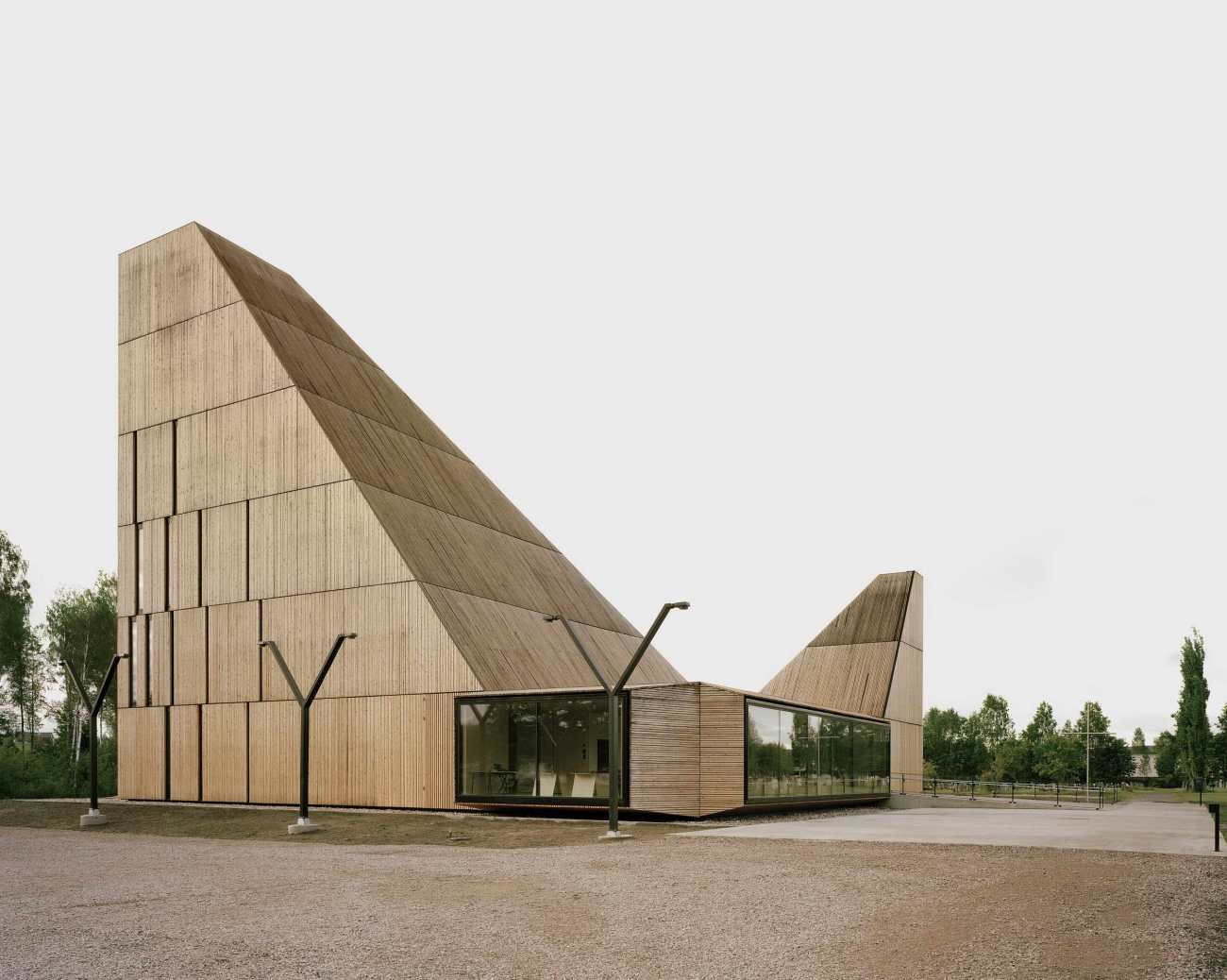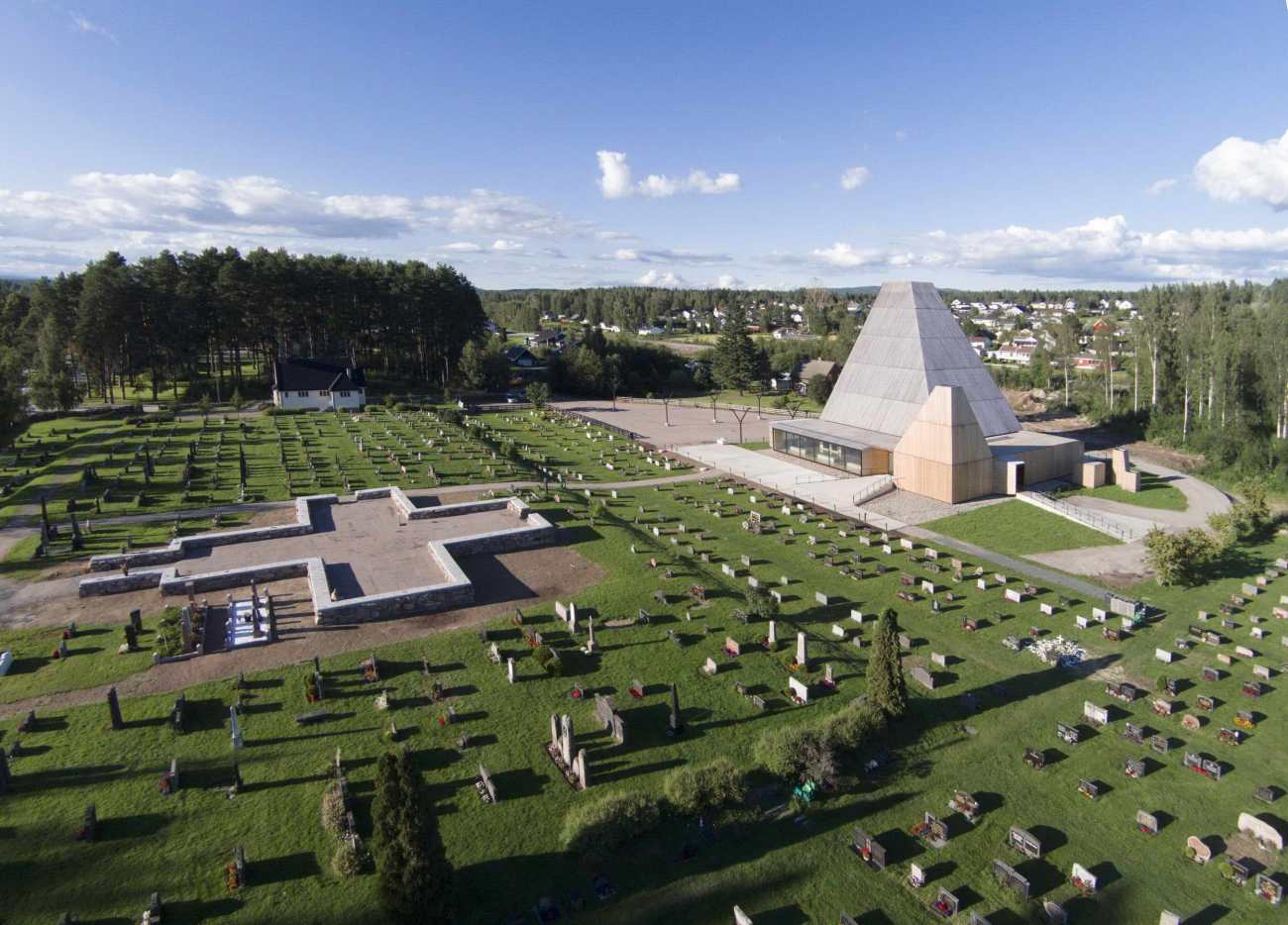| 公司: | Architect Espen Surnevik | 类型: | 建筑 |
|---|---|---|---|
| 地区: | 挪威 | 标签: | 宗教空间 |
Våler教堂的复活
2009年,Våler的古老木制教堂在一场大火中消失。对当地的小社区来说,失去两百年历史的木制教堂是一个悲剧。在挪威东部的松树林中,当地社区决定重建一座木制的新教堂。在那里安排了一场公开的建筑师竞赛,这是挪威有史以来规模最大的竞赛之一,共有来自23个国家的239个提案。"en med to av tre "项目被选为比赛的冠军。比赛获胜后,工程立即启动,并持续了三年,直到新教堂完工。
Våler Church of resurrection
In 2009 the old wooden church in Våler where lost in a fire. The loss of their two hundred year old wood church was a tragedy for the small local community. Placed in the middle of the pine forests in the eastern part of Norway, the local community decided to rebuild a new church built in wood. There where arranged an open architect competition which turned out to be one of the largest in Norway ever, with 239 proposals from 23 countries. The project «en med to av tre» was chosen as the winner for the competition. Work where immediately initiated after the victory, and continued non-stop for three years until the new church was finished.
Våler教堂的公开国际竞赛是挪威有史以来规模最大的竞赛之一,共有来自23个国家的239个提案。2015年春天,竞赛的优胜方案在这里完成。Våler是Glomma河畔的一个小村庄。教堂庭院是镇中心为数不多的规划区域之一,当19世纪的老教堂在2009年被烧毁时,人们对损失感触颇深。新教堂的所有但不可能完成的任务是重新创造失去的空间,作为当地人生活中重要事件的框架。
The open international competition for Våler church is one of the largest in Norway ever, with 239 proposals from 23 countries. The competitions winner proposal where finished spring 2015. Våler is a small village along the Glomma River. The churchyard is one of the few planned areas of the town centre, and when the old 19th Century church burned down in 2009, people felt the loss very keenly. The all but impossible task of the new church was to recreate the lost space as a frame for significant events in local people’s lives.
这个项目的主要挑战是给当地社区一个有意义的教堂。矛盾的是,旧教堂的悲惨损失给了一个新的开始。新教堂的主题因此变成了复活。我们与艺术家Espen Dietrichson一起,通过不同的设计元素来体现这个项目的主题。最重要的元素是日光从不同的日光洞口射入教堂。这象征着希望,象征着在旧教堂悲惨地失去后,光明不畏黑暗。
The main challenge in the project was to give the local community a meaningful church back. As a paradox the tragic loss of the old church gave the birth to a new beginning. The theme of the new church thereby became resurrection. Together with the artist, Espen Dietrichson, we worked with different design elements to manifestate the theme trough the project. The most important element is the work with daylight coming inn to the church from different daylight openings. This symbolises hope, and that light defies darkness, after the tragic loss of the old church.
建筑的表达是对场地的直接回应,围绕着一个朝向东西、东西南北的方形组织,类似于旧的十字教堂。礼拜仪式的主要故事已经成为教会的叙述:从火到复活。新教堂位于现有的轴线上,用心材松木的直板包裹,反映了当地的森林景观。自然立面有着悠久的当地传统。由于气候原因,它们在回归自然之前会慢慢变黑。每隔五十年,教堂的门面木材就会更新一次,而教堂也会因每一代人的到来而焕然一新。
The buildings expression was generated as a direct response to the place and organised around a quadrat with four oriels pointing north, south, east and west, as an analogy to the old cross-church. The main story of the liturgy has become the narrative of the church: from fire to resurrection. The new church is placed on the existing processional axis, and clad in straight board of heartwood pine, reflecting the local forest landscape. The natural facades have a long local tradition. Due to climate they slowly get darker before ending up going back to nature. Every fifty years the façade-wood will be renewed, and the church will resurrect as new for every new-born generation.
 |  |
该项目外侧为核心松木,内侧为桦木夹板。这代表了场地周围巨大的松树和桦树林,而这个项目也希望属于这片林子。核心松木是一种天然的有机材料,在挪威的气候条件下,它具有深色的铜锈。松木覆层慢慢地回归自然,每隔五十年,覆层就会被更换一次,而教堂也将为新的一代人 "重生"。
The project is cladded in core-pine on the outside, and in birch-plywood on the inside. This represents the huge pine- and birch woods that surrounds the site, in which the project wants to belong. The core-pine is a natural and organic material which in the Norwegian climate gets its dark patina. Slowly the pine-cladding returns to nature, and every fifty years the cladding will be replaced, and the church will be «reborn» for new generations.
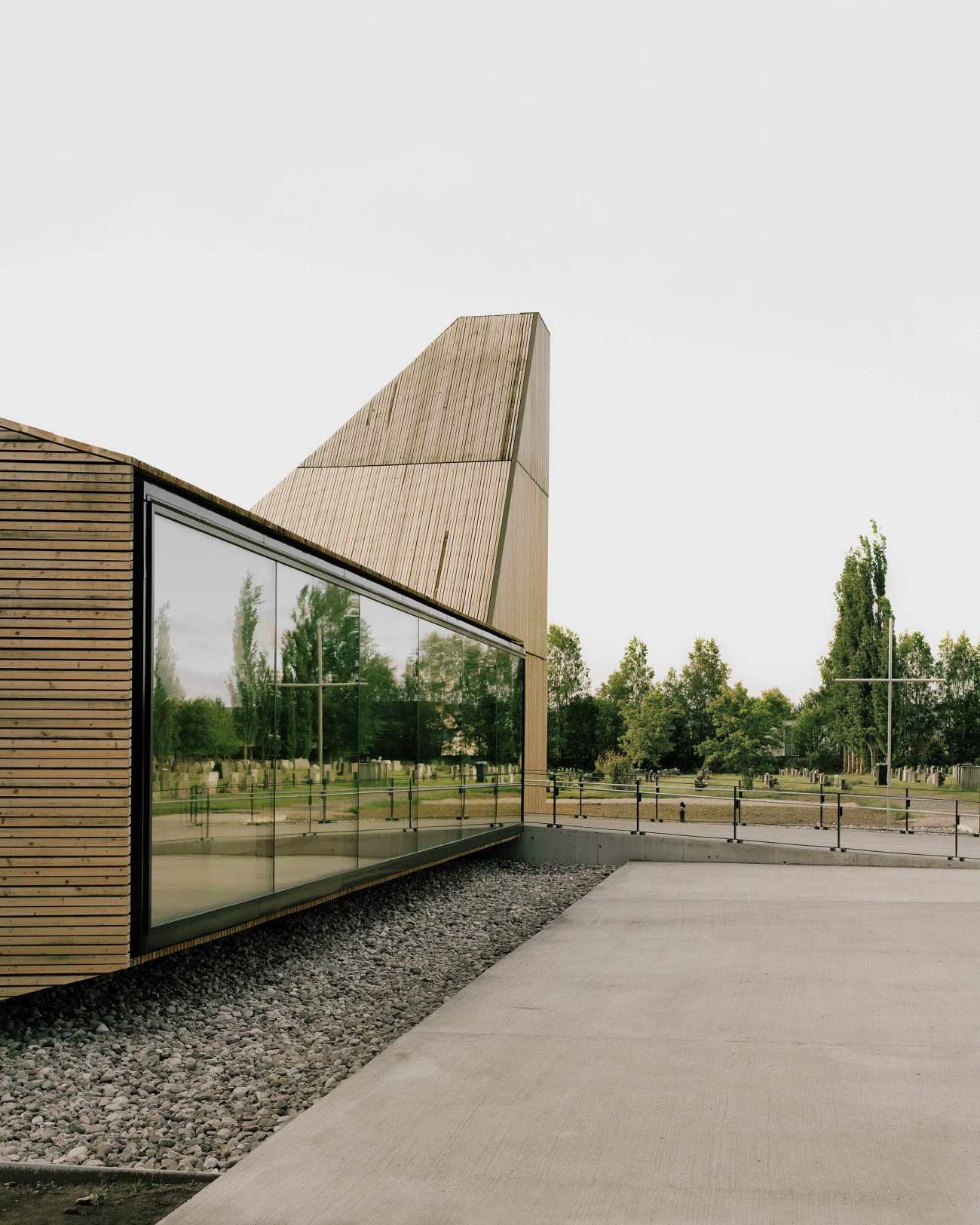 | 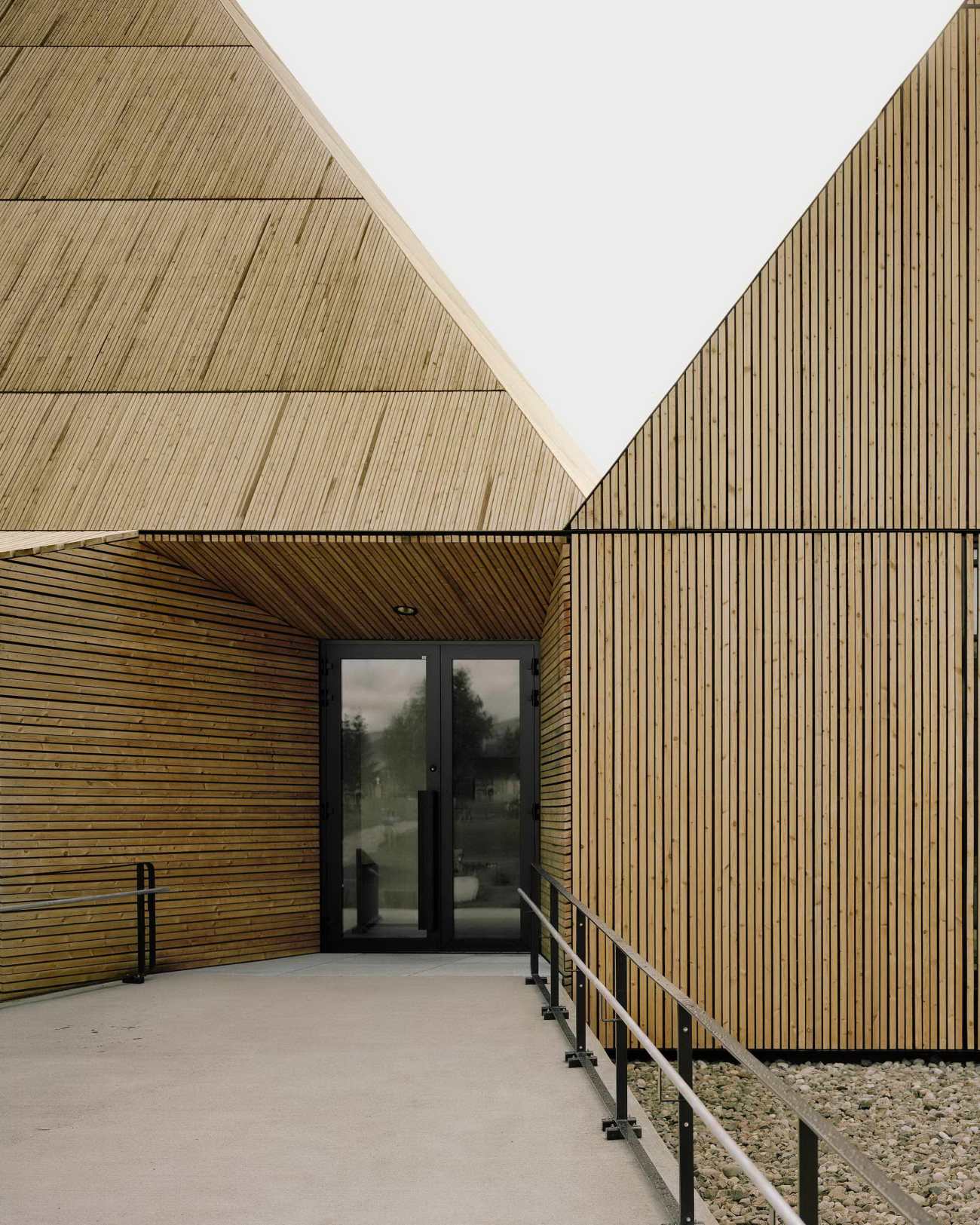 |
内部用桦木夹板覆盖。内部的艺术阐述力求 "消除 "现实的承重结构,实现轻盈的表达。塔楼标志着主要的礼仪空间,教堂大厅和洗礼堂,从一个共同的混凝土浇铸基座上升起,这是教堂的 "基岩"。旧十字架教堂的脚印,被做成了纪念碑,作为旧墓地中间的一个大坟墓。在纪念碑的后面,新教堂拔地而起。新教堂是作为一个文化舞台,为整个Våler社区提供一个开放的聚会场所。
The interior is covered in birch plywood. The artistic elaboration in the interior seeks to “eradicate” the reality of the loadbearing structure and achieve an expression of lightness. The towers mark the main liturgical spaces, the church hall and the baptistery, rising from a common cast concrete plinth, the “bedrock” of the church. The footprint of the old cross church, were made into a memorial as a big grave in the middle of the old graveyard. Behind the memorial the new church rises up. The new church is built as a cultural arena, and open-minded gathering-place for the whole community of Våler.
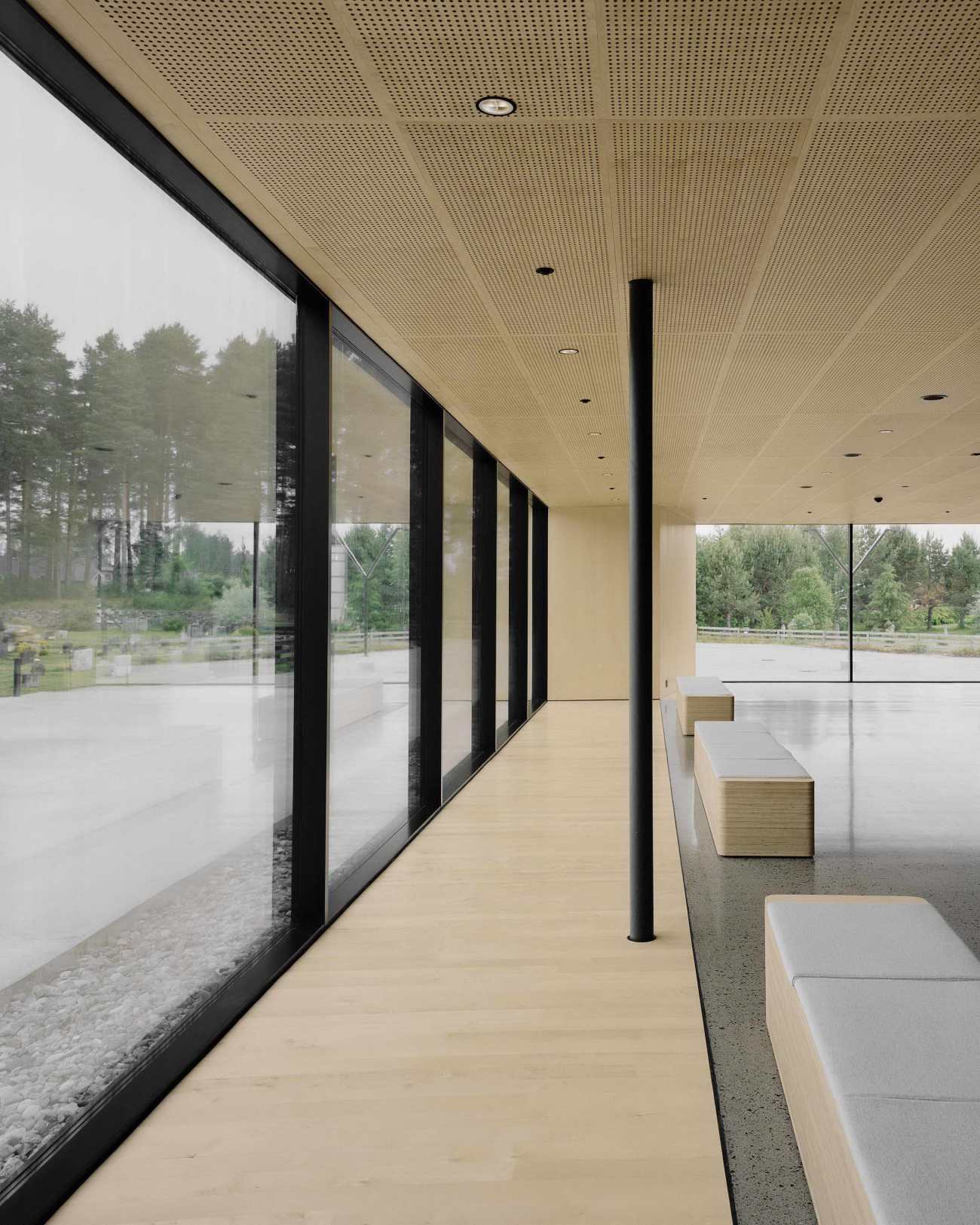 | 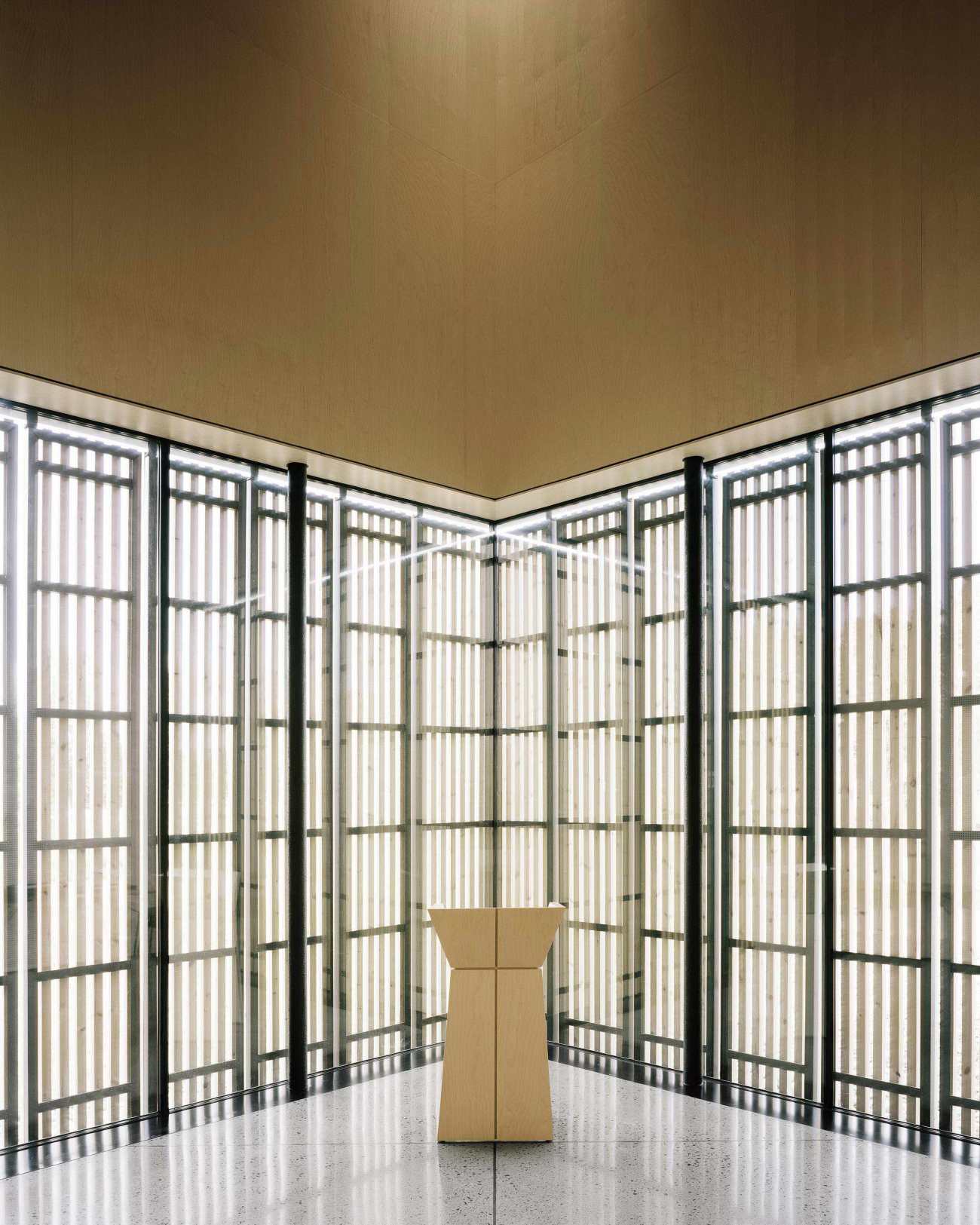 |
 | 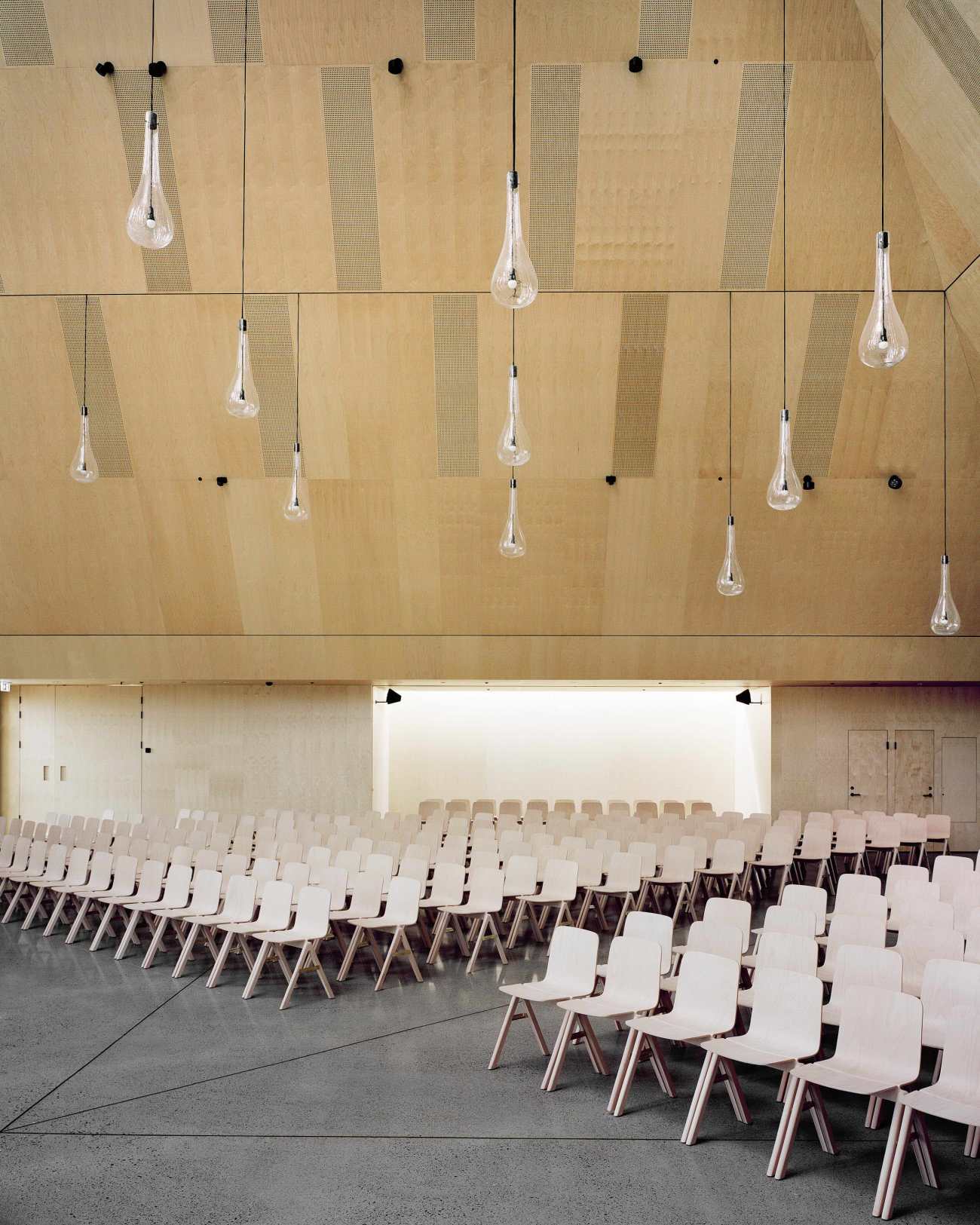 | 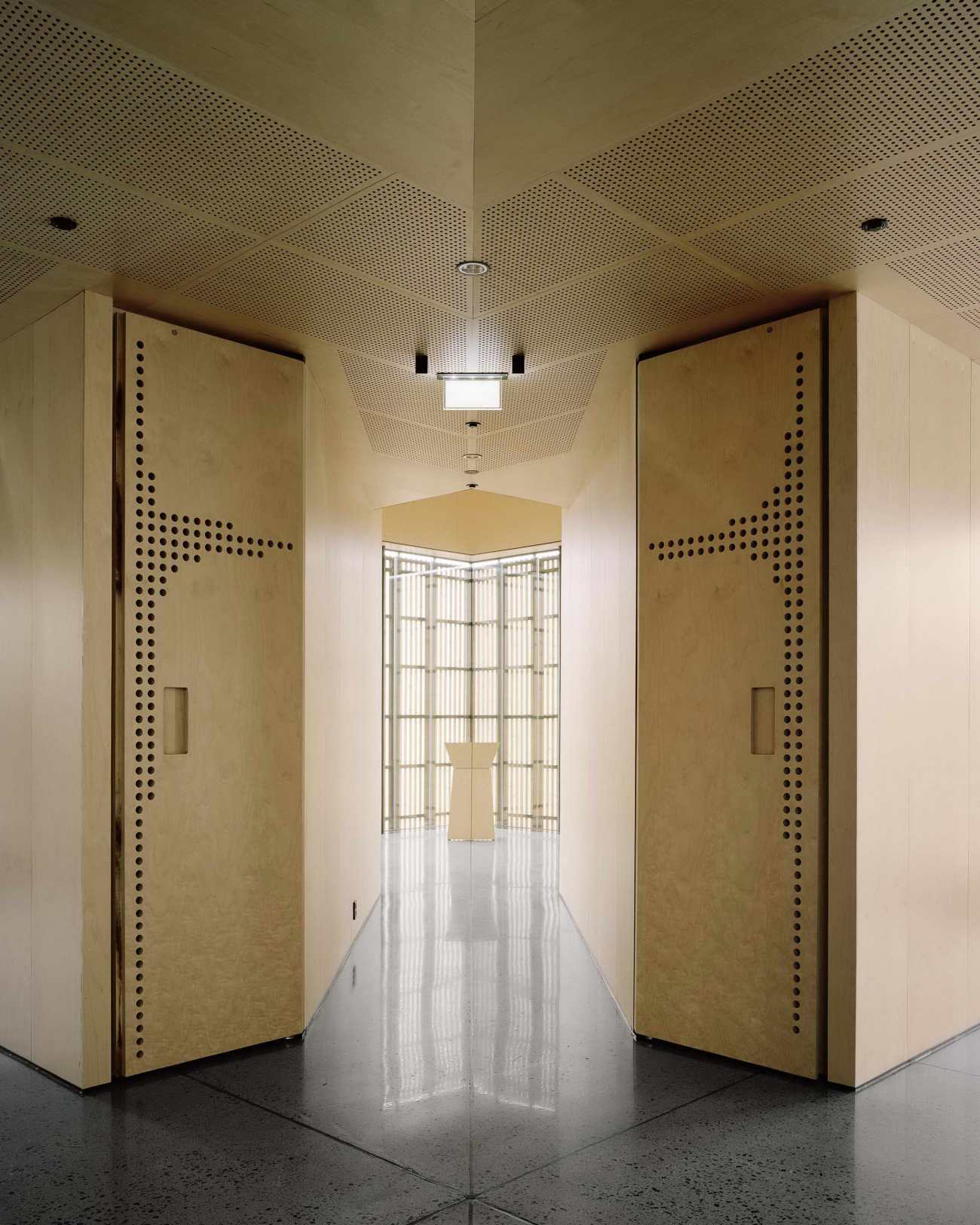 |
建筑的形式是按照严格的几何规则设计的。平面呈四边形,被一条对角线的游行轴线所分割,从南边的小Chappel到北边的主教堂房间。两座塔楼显示了教堂内礼仪点的位置。最高的塔高24米,小塔高12米。塔楼的顶部有过光灯,使得观众席上的景色向着天空看去。同时,遮光罩还可以让日光进入房间。
The forms of the building is designed by strict geometric rules. The plan is quadratic and divided by a diagonal procession-axis going from a small Chappel, placed south, and over to the main church room placed north. Two towers are showing where the liturgics points are placed in the church. The highest tower is 24m high, and the small tower is 12m. The towers have overlights on the top, making a view from the audience towards the sky. At the same time the overlights allow daylight to enter the rooms.
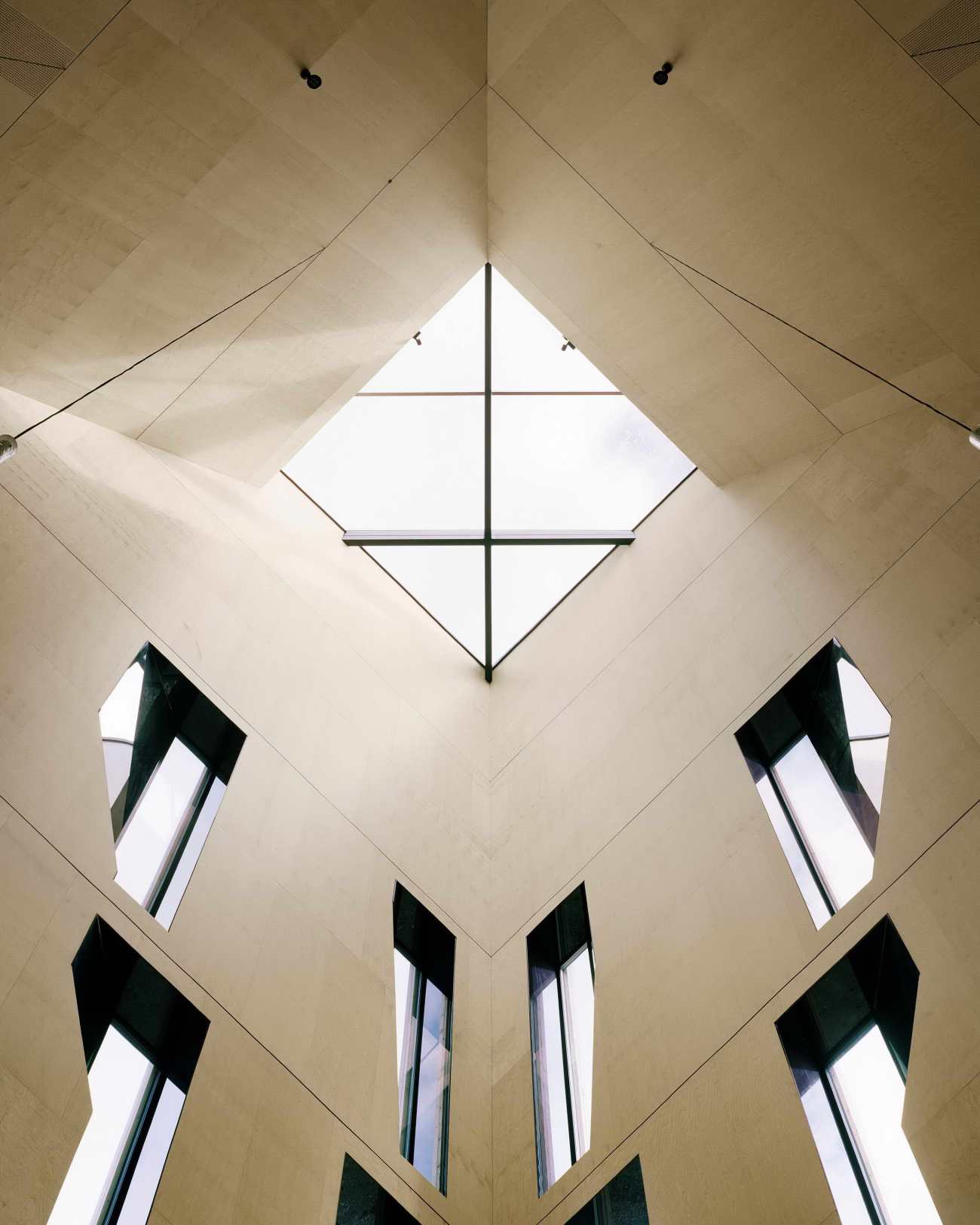 | 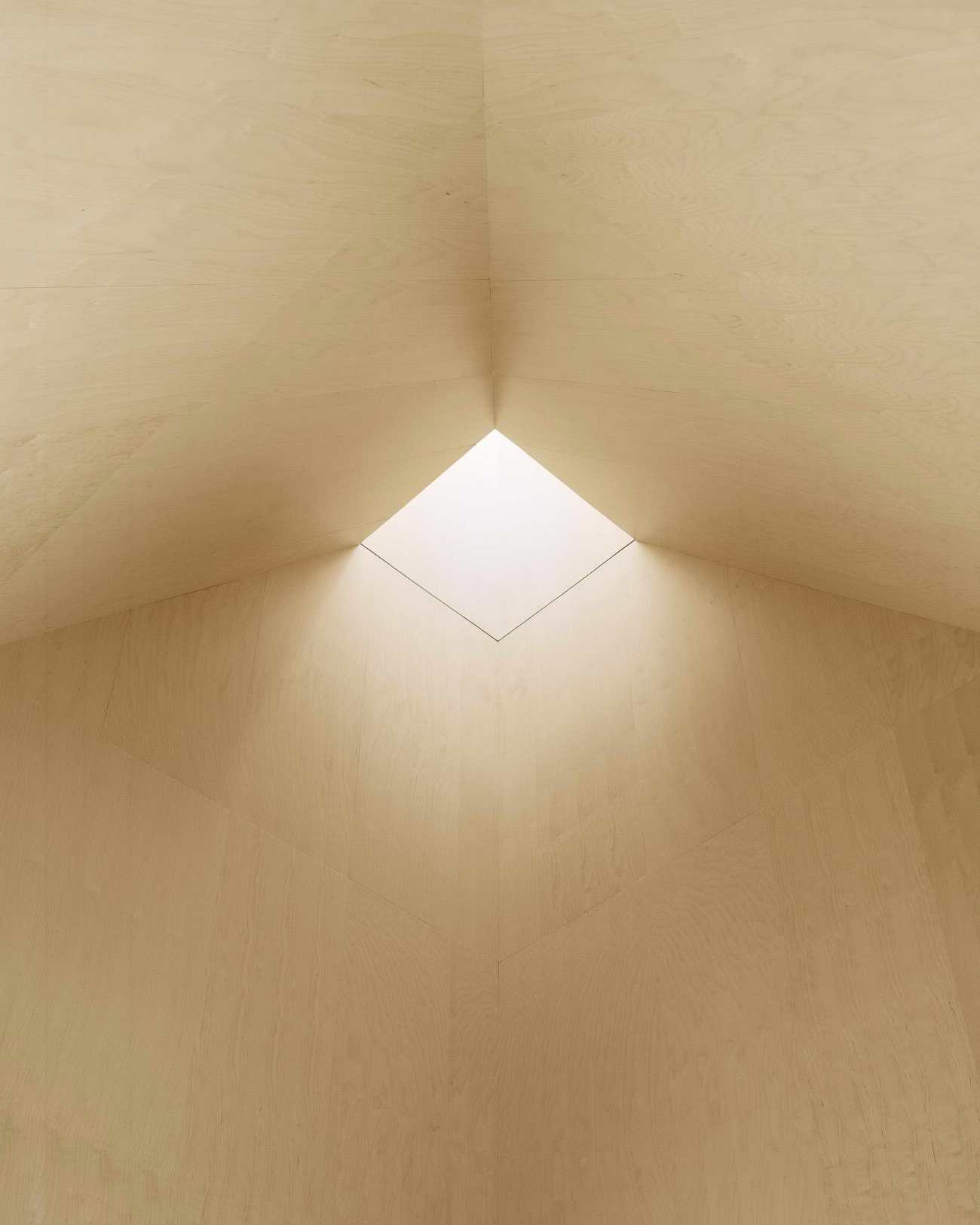 | 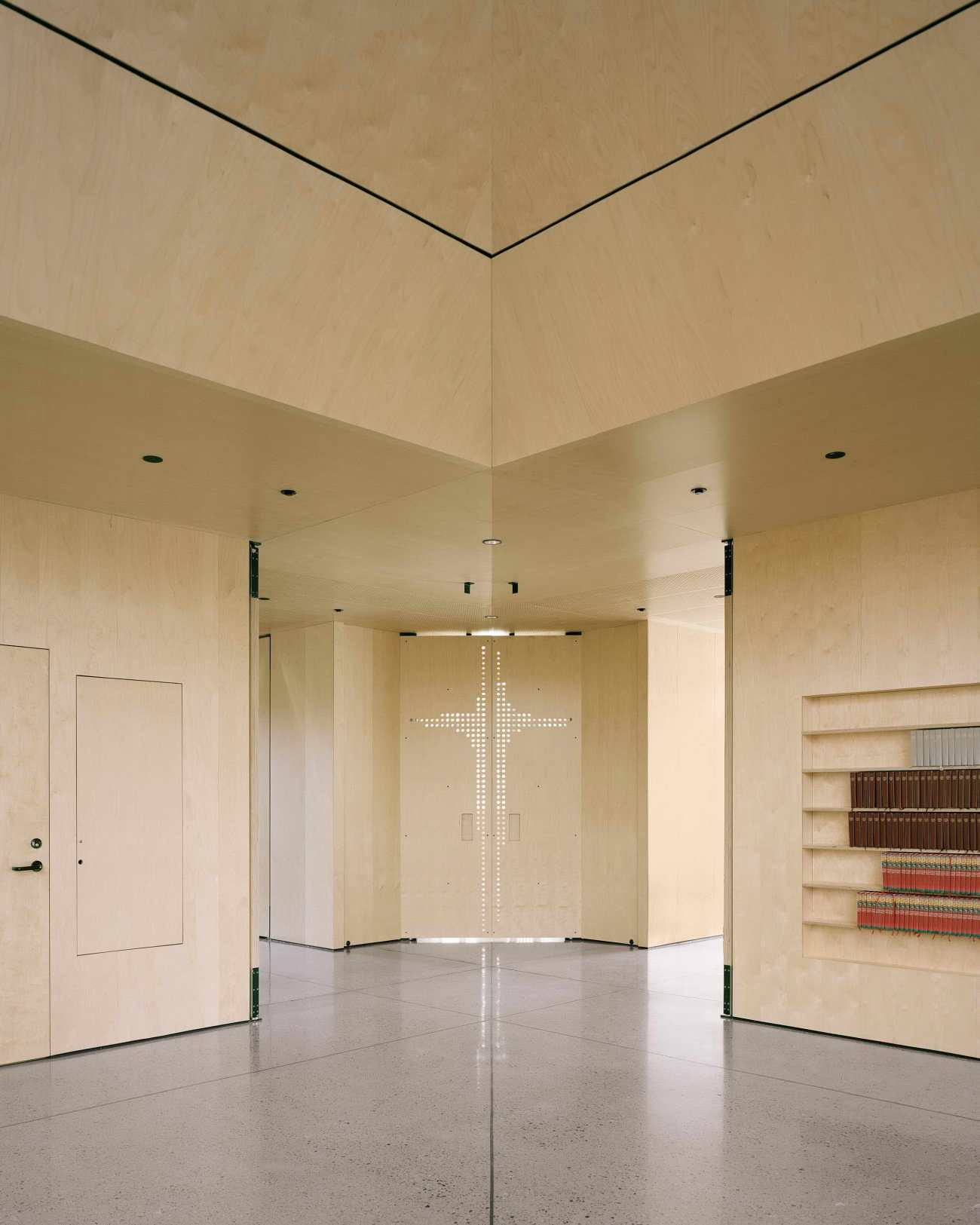 |
从场地中来看,旧教堂的足迹被重建以作纪念。古老的教堂被安置在古老墓地的坟墓之间。
In the siteplan, the footprint of the old church is rebuilt to make a memorial. The old church is brought to rest between the graves on the old graveyard.
Project: Våler Church
Design firm: Architect Espen Surnevik
Client: Våler church-council (Location Våler – Hedmark – Norway)
Architect: Espen Surnevik (1973) – professor at The Oslo School of Architecture
Collaborating structural engineer: Dr. Techn. Kristoffer Apeland AS
Collaborating artist: Espen Dietrichson (1976)
Contractor / Entrepreneur: Martin M. Bakken AS
Project type:: Lutheran Norwegian Church.
Location: The eastern part of Norway, close to the Swedish border, two hours driving north of Oslo.
Våler-center (place) – Våler (local district) – Hedmark (district) – Norway
Site: Old cemetery form the 17-th centuary.
Project size: The Church is 950 square meters. Large tower are 24m high. Small tower are 12m high.
Awards:
Building of the Year 2015 in Norway (Årets bygg 2015)
Norwegian wood-award 2016 (Innlandets trepris 2016)
Archmarathon Award Milano 2016 “Best Religious Building”
The Norwegian Governmental Award of Architecture 2016 (Statens Byggeskikkpris 2016)
Photo credit: Rasmus Norlander, Michel Vo, Asgeir Trønes
更新日期:2020-12-09 15:56:02
非常感谢 Architect Espen Surnevik 带来的精彩项目, 查阅更多Appreciations towards Architect Espen Surnevik for sharing wonderful work on hhlloo. Click to see more works!

